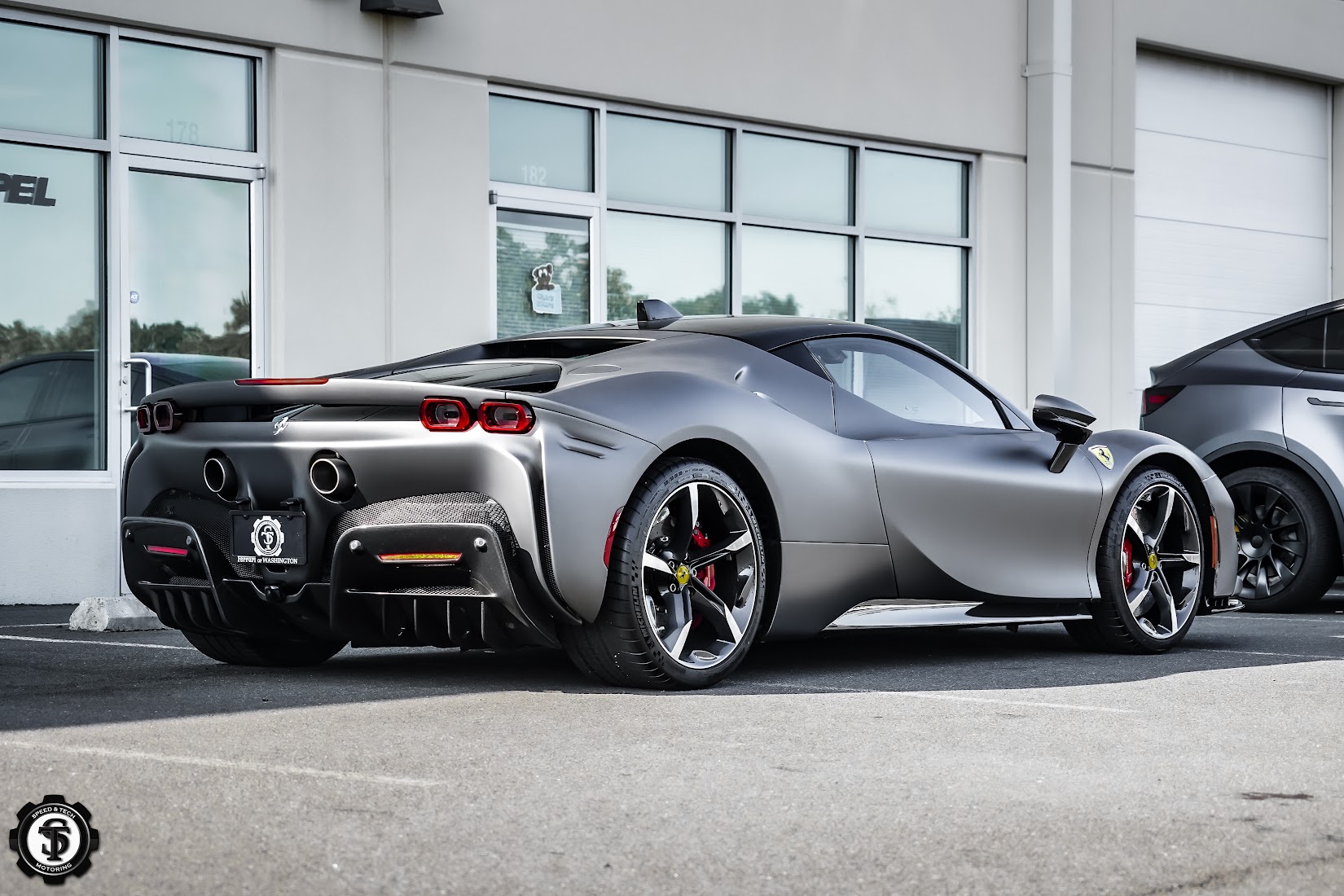If you’ve ever considered window tinting for your car, you’ve likely encountered the term “dyed window tinting.” This is one of the most common and affordable tinting options on the market. For drivers in North Little Rock, where the Arkansas sun can make a car feel like an oven, choosing the right type of window tint is crucial. While there are several options available, dyed window tinting remains a popular choice due to its balance of cost, aesthetics, and functionality. But like every choice, it comes with its own set of advantages and disadvantages. In this guide, we’ll explore everything you need to know about dyed window tinting—from its benefits to its potential drawbacks—so you can make an informed decision.
What Is Dyed Window Tinting?
At the core, dyed window tinting involves applying a layer of dye to a thin film and then applying it to your car’s windows. The dye absorbs sunlight and heat, making it an effective way to reduce glare and improve privacy. It’s important to understand that dyed tint doesn’t just look good—it serves practical purposes, such as UV protection and temperature control.
While it’s a great option for those who want a darker, more opaque look for their car, dyed window tinting may not be the best option for everyone. Let’s dive deeper into both its benefits and potential drawbacks.
The Benefits of Dyed Window Tinting for North Little Rock Drivers
1. Cost-Effective Solution
One of the biggest draws of dyed window tinting is its affordability. If you’re on a budget but still want to protect your car from heat, UV rays, and enhance its appearance, dyed tinting is a great option. Compared to more expensive alternatives like ceramic or metallic tints, dyed window tints offer a similar level of privacy and UV protection at a fraction of the cost.
2. Improved Privacy
Privacy is a big concern for many drivers, especially if they leave valuables inside their car or just enjoy the peace of mind that comes with not being visible to passersby. Dyed window tinting can significantly improve the privacy of your vehicle by darkening the windows, making it much harder for others to see inside.
3. UV Protection
Driving under the sun for extended periods can cause skin damage due to harmful UV rays. Dyed window tints can block up to 99% of UV rays, which is beneficial not only for your health but also for preserving the interior of your vehicle. UV rays can cause upholstery and dashboards to fade, so keeping your car protected from the sun can extend its life.
4. Aesthetic Appeal
Let’s face it: window tinting looks cool. Dyed window tint provides a sleek, stylish look to any vehicle. For those who appreciate the appearance of a car with tinted windows, this type of tint can be a great way to upgrade your car’s visual appeal without spending too much.
5. Glare Reduction
If you’ve ever driven during the day and struggled with glare from the sun, you know how dangerous it can be. Dyed window tinting significantly reduces glare, making your driving experience more comfortable and safer. Less glare means you’re less likely to be distracted while driving.
6. Temperature Control
On hot days, stepping into your car can feel like entering an oven, especially in areas like North Little Rock, where summer temperatures can soar. Dyed window tint helps to regulate the temperature inside your vehicle by blocking some of the sun’s heat. This can make a huge difference, especially for those who don’t want to crank up the air conditioning immediately after getting in.
Potential Drawbacks of Dyed Window Tinting
While dyed window tinting has several advantages, it’s important to consider the potential downsides before making a decision.
1. Fading Over Time
One of the major drawbacks of dyed window tinting is its tendency to fade over time. The dye used in this type of tint is susceptible to UV exposure, and after a few years, you may start to notice the tint becoming lighter, especially if the car is exposed to the sun frequently. This can reduce the overall effectiveness of the tint and affect the aesthetic appeal of your vehicle.
2. Limited Heat Rejection
Compared to higher-end tints, such as ceramic or metallic, dyed window tints do not reject as much heat. While they can block some heat, the level of temperature control is not as high as with other types of tints. If you live in an area with extreme heat and are looking for more significant heat reduction, you might want to consider other options.
3. Less Durability
Dyed window tint films are generally less durable than other options like ceramic or carbon-based tints. They are more prone to scratches, bubbling, and peeling. If the tint is not professionally applied or if it is exposed to harsh conditions, it can degrade more quickly than other types of tints.
4. Potential Signal Interference
While dyed window tints don’t interfere with electronics to the extent that metallic tints do, they can still cause some minor signal issues. This may include interference with GPS devices, radio signals, and cell phone signals. If you rely heavily on these devices in your car, you may want to consider a different type of tint.
5. Lower Clarity
In some cases, dyed tints may not offer the same level of optical clarity as higher-end tints. This could mean that your visibility is slightly reduced, particularly at night or in low-light conditions. While this effect is typically minor, it’s worth considering if you drive often at night or in rainy conditions.
How Dyed Window Tinting Compares to Other Types of Tinting
Dyed vs. Ceramic Window Tinting
Ceramic window tinting is often considered the best option for heat rejection and UV protection. However, it comes with a higher price tag. While dyed window tinting is more affordable, it doesn’t offer the same level of performance in terms of heat control and UV protection.
Dyed vs. Metallic Window Tinting
Metallic tints, as the name suggests, contain metal particles that help block heat and reduce glare. However, these can interfere with electronic signals like GPS and cell reception. Dyed tinting doesn’t cause such issues, but it is less effective in terms of heat rejection and durability.
Dyed vs. Carbon Window Tinting
Carbon window tints provide better heat rejection than dyed tints and have a longer lifespan. They also offer a matte finish, which some car owners prefer. However, carbon tints are typically more expensive than dyed window tinting.
Is Dyed Window Tinting Right for You?
If you’re on a budget but still want to enjoy some privacy, UV protection, and a cool look for your car, dyed window tinting is an excellent option. It’s ideal for drivers who don’t need the most advanced heat rejection or the most durable solution. However, if you’re willing to invest more for enhanced performance and longer-lasting results, you might want to consider other options like ceramic or carbon tints.
TopTint Mobile Window Tinting Serving the Blue Hill Community and Beyond in North Little Rock, Arkansas
TopTint Mobile Window Tinting is dedicated to serving the diverse needs of the local community of North Little Rock including individuals residing in neighbourhoods like Blue Hill. With its convenient location near landmarks such as Palestine Cemetery and major intersections like Cato Rd & Camp Joseph Robinson, (coordinates: 34.880692, -92.284265), we offer Window Tinting services.
Get the Window Tinting services in North Little Rock at Blue Hill.
Navigate from Blue Hill to TopTint Mobile Window Tinting Now
Conclusion
Dyed window tinting is a popular, cost-effective option for drivers in North Little Rock looking to enhance their car’s privacy, comfort, and aesthetics. It provides excellent UV protection, glare reduction, and a stylish appearance at an affordable price. However, it does come with some drawbacks, such as fading over time, limited heat rejection, and potential durability issues. By carefully considering your needs and priorities, you can determine if dyed window tinting is the right choice for you.
FAQs
1. How long does dyed window tinting last?
Dyed window tinting typically lasts between 3 to 5 years before it starts to fade or degrade, depending on the quality of the tint and how much the car is exposed to the sun.
2. Can dyed window tinting be removed?
Yes, dyed window tinting can be removed, but it’s best done by a professional to avoid damaging your windows.
3. Will dyed window tinting block all UV rays?
Dyed window tinting can block up to 99% of harmful UV rays, offering protection for both your skin and your car’s interior.
4. Can I apply dyed window tinting myself?
While DIY kits are available, professional installation is recommended for the best results and to ensure the tint complies with local laws.
5. How do I maintain my dyed window tint?
To extend the life of your tinted windows, avoid using ammonia-based cleaners and harsh scrubbing. Use a soft cloth and mild cleaner to keep the tint in good condition.



